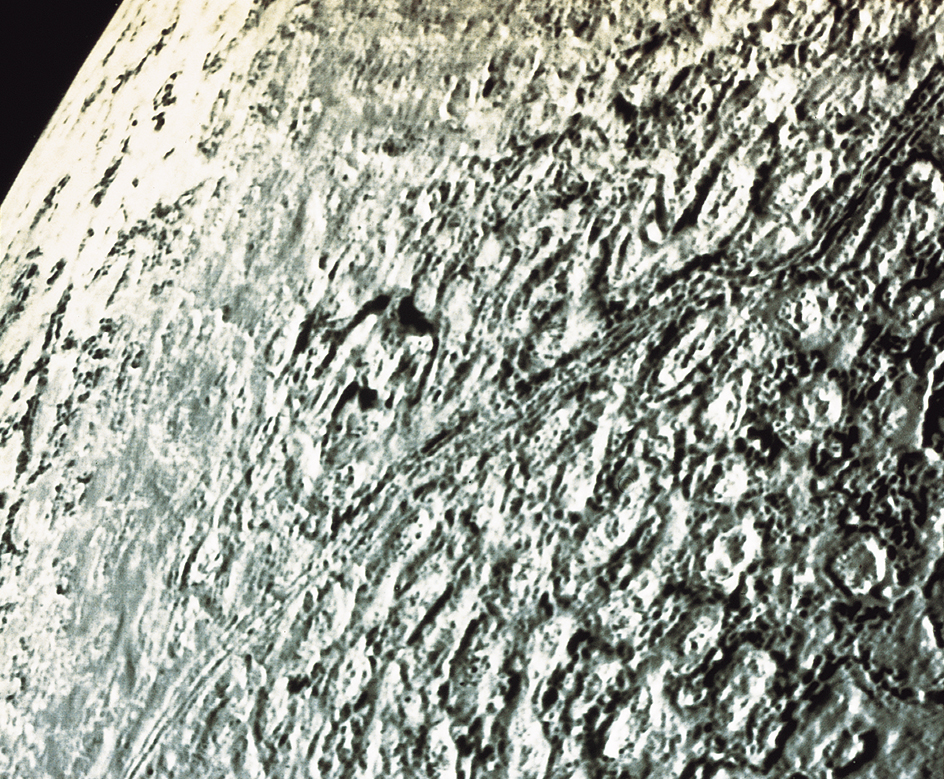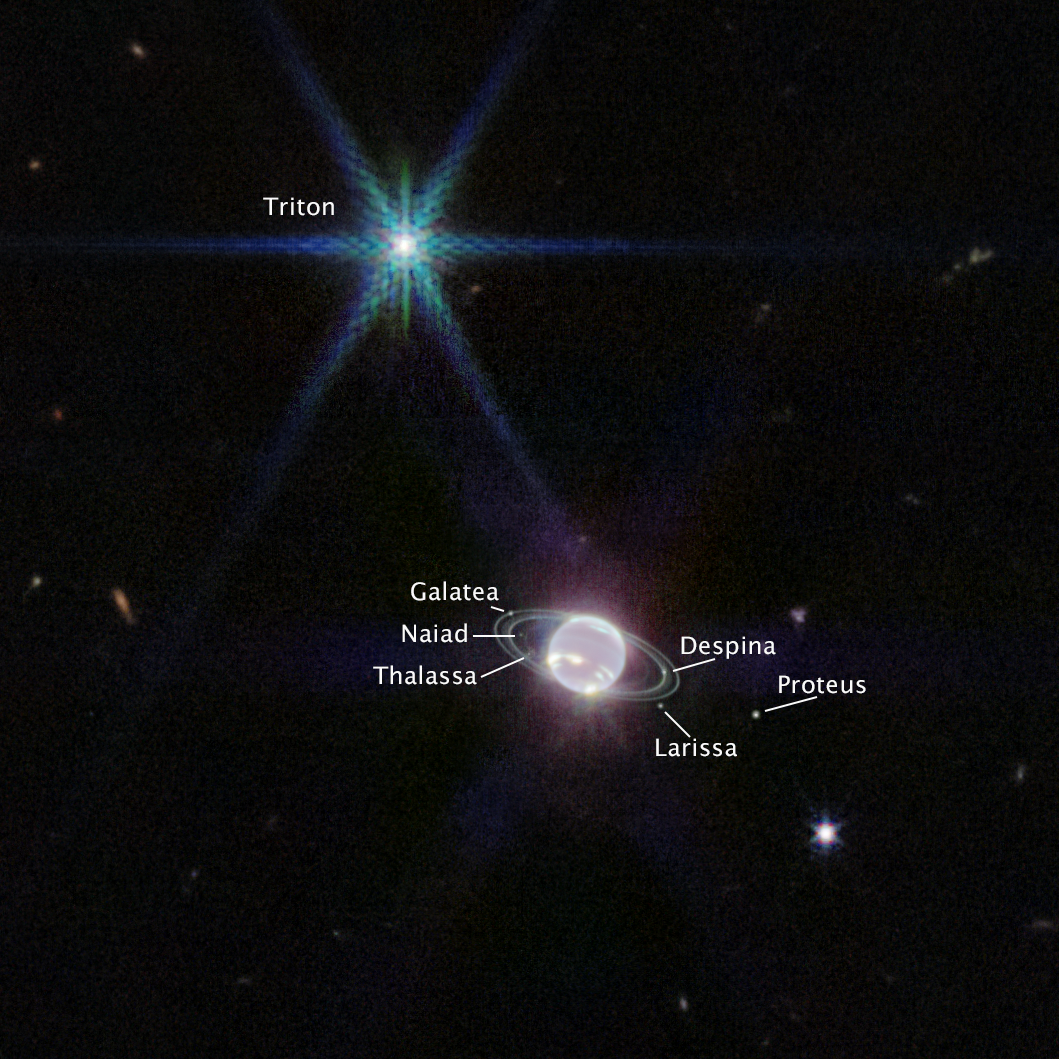Triton is the largest moon of Neptune. Triton is an unusual moon. It orbits Neptune in the direction opposite that of the planet’s rotation. Triton is also one of only a few bodies in the solar system thought to have volcanic activity. And it is one of only two satellites in the solar system whose atmosphere is dense enough to have weather. Saturn’s moon Titan is the other one. 
Orbit.
Triton orbits Neptune at an average distance of about 220,440 miles (354,760 kilometers). Its orbit is approximately circular. Triton takes 141 hours to complete one orbit around Neptune. It takes the same amount of time for Triton to rotate once on its axis. As a result, the same side of Triton faces Neptune at all times. This phenomenon is called synchronous rotation.
Triton’s orbital direction indicates that Triton did not form at or near its present location. That is, it did not condense from the dust and gas left over from the formation of Neptune. If it had done so, it would orbit the planet in the same direction in which Neptune rotates. Rather, Triton formed in a disk of small bodies outside the orbit of Neptune known as the Kuiper belt. Triton originally orbited the sun as an independent body. Neptune’s gravity eventually “captured” it.
Structure and composition.
Triton is 1,682 miles (2,707 kilometers) in diameter, roughly the size of Pluto. Triton is dense and rocky. It is also extremely cold. The space probe Voyager 2 measured a surface temperature of -391ºF (-235 ºC).
Triton has a thin nitrogen atmosphere. The atmosphere also has tiny amounts of methane and carbon monoxide. The atmosphere changes with the seasons, which are each 40 years long. During summer, when sunlight is most direct, polar ice changes into gas in a process called sublimation. This process thickens the atmosphere. Seasonal changes also create winds.
Triton’s surface is covered with nitrogen ice. In many areas, the ice forms pits, ridges, or plains. These features, and the fact that Triton has few craters, show scientists that Triton’s surface is actively changing. 
Scientists think cryovolcanic eruptions shape Triton’s surface features. Cryovolcanoes are volcanoes that spew slushy ice rather than molten rock. In 1989, Voyager 2 photographed geyserlike plumes 5 miles (8 kilometers) high erupting from Triton’s surface. These eruptions may have been produced by cryovolcanoes. Scientists do not know what substances were ejected in the plumes.
Triton may have an underground ocean. Its surface is much too cold for water to remain liquid, but scientists think the moon’s interior could be warmed by tidal heating—interior heat created by the push and pull of gravity. Triton has not been as well studied as other moons thought to have underground oceans, such as Saturn’s moon Enceladus. Without additional information, scientists cannot confirm or rule out the presence of an ocean on Triton. Close-up measurements of magnetism or samples of Triton’s plumes could provide more evidence for an ocean.
History of study.
Triton was discovered on Oct. 10, 1846, only three weeks after the discovery of Neptune. Triton was named after a sea god in Greek mythology. In recent decades, astronomers have studied Triton with such powerful telescopes as the Hubble Space Telescope, the Very Large Telescope (VLT), and the James Webb Space Telescope. In 2010, astronomers used the VLT to confirm that Triton has seasons. 
Voyager 2 flew by Triton in 1989. The probe could clearly photograph only the southern half of the moon because the northern half was in darkness during the flyby. No other spacecraft has visited Neptune or its moons. Scientists continue to analyze Voyager data today.
